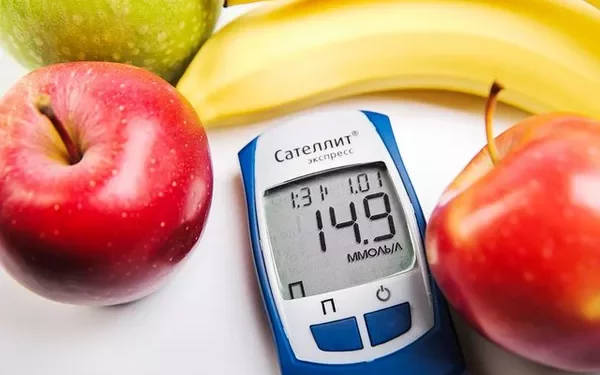Diabetes is a chronic metabolic disorder that affects millions of people worldwide. One of the key diagnostic tools used to assess blood glucose levels over time is the A1C test (also known as the hemoglobin A1C or HbA1c test). This test measures the percentage of glycated hemoglobin in the blood, providing an average of blood sugar levels over the past 2 to 3 months.
But at what A1C level is a person officially considered diabetic? This article explores the role of A1C in diagnosing diabetes, what different A1C levels indicate, and the importance of blood glucose control for long-term health.
What Is the A1C Test?
The A1C test is a blood test that reflects average blood glucose levels over the past few months by measuring the amount of glucose attached to hemoglobin—the protein in red blood cells that carries oxygen. Since red blood cells have a lifespan of about 120 days, the test gives a reliable picture of blood sugar control over a prolonged period.
Unlike fasting blood glucose tests, which only provide a snapshot of glucose levels at a single point in time, the A1C test does not require fasting and offers a more comprehensive picture of a person’s blood sugar management.
How the A1C Test Works
Glucose naturally attaches to hemoglobin in the blood. The higher the blood sugar levels, the more glucose attaches to hemoglobin, resulting in a higher A1C percentage. The test is expressed as a percentage, representing the proportion of glycated hemoglobin in total hemoglobin.
For example, an A1C of 6.5% means that 6.5% of hemoglobin molecules have glucose attached to them. This provides a strong indicator of how well blood sugar has been controlled over time.
At What A1C Level Are You Considered Diabetic?
According to the American Diabetes Association (ADA), World Health Organization (WHO), and the Centers for Disease Control and Prevention (CDC), the following A1C levels determine diabetes status:
- Normal: A1C below 5.7%
- Pre-diabetes: A1C between 5.7% and 6.4%
- Diabetes: A1C 6.5% or higher
If your A1C test result is 6.5% or higher on two separate tests, you are diagnosed with diabetes. However, a single test may not be sufficient for diagnosis due to potential lab errors, illness, or other factors affecting blood sugar levels.
Why Is an A1C of 6.5% the Cutoff for Diabetes?
Research has shown that an A1C level of 6.5% or higher is associated with a significantly increased risk of diabetes-related complications, including nerve damage, kidney disease, and cardiovascular problems. This threshold was established based on extensive clinical studies that demonstrated people with an A1C of 6.5% or more tend to have higher fasting glucose levels and poor glucose tolerance.
It is important to note that while 6.5% is the diagnostic threshold, diabetes is a progressive disease, and symptoms and complications can develop even at lower A1C levels.
Understanding Pre-Diabetes and the A1C Range of 5.7% to 6.4%
What Is Pre-Diabetes?
Pre-diabetes is a condition where blood sugar levels are higher than normal but not high enough to be classified as diabetes. It is a warning sign that a person is at risk of developing type 2 diabetes and other metabolic disorders.
An A1C between 5.7% and 6.4% indicates pre-diabetes.
Individuals in this range have a significantly increased risk of developing diabetes within 5-10 years if no lifestyle changes are made.
Many people with pre-diabetes do not show symptoms, making routine A1C testing essential for early detection.
The Importance of Addressing Pre-Diabetes
While pre-diabetes is not yet full-blown diabetes, it is a sign that the body is struggling with blood sugar regulation. The good news is that early intervention through diet, exercise, and weight management can prevent or delay the progression to type 2 diabetes.
Why Keeping A1C Levels Low Matters
Studies have shown that even small reductions in A1C levels can dramatically lower the risk of diabetes-related complications:
- Lowering A1C by 1% reduces the risk of diabetic eye disease by 76%.
- A 1% reduction also lowers the risk of kidney disease by 50% and nerve damage by 60%.
- Keeping A1C levels below 7% is associated with better cardiovascular health and a lower risk of heart disease.
How Often Should You Get an A1C Test?
The ADA recommends different testing frequencies based on individual risk factors and diabetes status:
For people without diabetes: Every 3 years (especially if overweight or have a family history).
For pre-diabetics: Every 6-12 months to monitor changes.
For diabetics (well-controlled): Every 6 months.
For diabetics (poorly controlled): Every 3 months to adjust treatment.
Regular A1C testing allows for early intervention and helps individuals and healthcare providers make informed decisions about lifestyle changes, medications, and treatment plans.
Can A1C Results Be Inaccurate?
While the A1C test is a reliable tool, certain conditions can affect its accuracy, including:
- Anemia (low red blood cell count)
- Iron deficiency
- Chronic kidney or liver disease
- Pregnancy
- Certain genetic blood disorders (e.g., sickle cell disease, thalassemia)
In such cases, additional blood glucose tests, such as fasting blood sugar (FBS) or an oral glucose tolerance test (OGTT), may be necessary for an accurate diagnosis.
Conclusion: The Importance of A1C Monitoring
An A1C level of 6.5% or higher is the diagnostic threshold for diabetes, while 5.7% to 6.4% indicates pre-diabetes. Regular A1C testing is crucial for early detection, risk assessment, and diabetes management.
If you are diagnosed with pre-diabetes or diabetes, making healthy lifestyle changes, following a balanced diet, exercising regularly, and monitoring blood sugar levels can help lower your A1C and reduce the risk of complications.
For individuals at risk, early intervention is key—small changes in diet and activity levels can prevent the progression of diabetes and promote long-term health.
Related topics:
What’s Normal Low Blood Sugar Levels


























